#very interesting books
Text
Peter Cashorali's work is so interesting, because yes, it's fairy tales, but it's EDUCATIONAL fairy tales written with the explicit goal of passing down knowledge within the gay (men) community. Also, these books are almost thirty years old, so it is lived experience by what it now pretty much a previous generation. Fascinating read. Also makes you wonder what today's queer wisdom would look like.
#fairy tales#Peter Cashorali#there is a lot of AIDS in those stories#unsurprisingly#but still an interessting experience#I mean the blend between fairy tale and modern urban life in general fascinating#I feel like our equivalent of this would be the Internet#and how not to let social media drag you into a weird hole#where you become completely desperate and lose all hope in humanity#IDK#very interesting books
0 notes
Text
I'm re-reading the Discworld series for reasons, and honestly the most relatable part of reading these as an adult is how many of the protagonists start out being tired, used to their little routine and vaguely disgruntled by the interruption of the Plot. Sam Vimes wants to lie drunk in a gutter and absolutely doesn't want to be arresting dragons. Rincewind is yanked into every situation he's ever encountered, though he'd much rather be lying in a gutter too. (Minus the alcohol. Plus regretting everything he's ever done said witnessed or even heard about fourth-hand in his whole life.) Granny Weatherwax is deeply suspicious of foreign parts and that includes the next town over; Nanny has leaned into the armor of "nothing ever happens to jolly grannies who terrorize their daughters-in-law and make Saucy Jokes"
Only the young people don't seem to have picked up on this---and that's fortunate, because someone has to run around making things happen, if only so Vimes and Granny and Rincewind have a reason to get up (complaining bitterly the whole time) and put it all to rights. Without Carrot, Margrat, Eric, etc. these characters don't have that reason; they're likely to stay in the metaphorical gutter and keep wondering where it all went wrong or why anything has to change.
............well, that's not quite true. You get the sense that Vetinari knows how much certain people hate the Plot. And as the person sitting behind the metaphorical lighting board of Ankh-Morpork, he takes no small pleasure in forcing the Plot-haters specifically to stand up, and say some lines.
#I finished guards guards just yesterday and I forgot that vimes and wonse were set up to be mirror images#both boys from the shades of very different natures; who made good (ish) in wildly different ways#also it's interesting reading this books from an adult perspective; my mind isn't blown that these books exist#anymore; plus I've read so many good books since#and they're not perfectly constructed novels! especially these early books;#there are plenty of spots where I can feel the narrative get thin; where there's more handwaving than I remember#but each book IS better and tighter; the jokes are funnier and the irony sharpens; the footnotes are better utilized#the characters are getting more interesting and complicated as opposed to set-ups for jokes.#it's an illustration of someone getting better at their chosen field and that in itself is more impressive than I was anticipating.#discworld
5K notes
·
View notes
Text
also in regards to that last article about varied ways of thinking about psychosis/altered states that don't just align with medical model or carceral psychiatry---I always love sharing about Bethel House and their practices of peer support for schizophrenia that are founded on something called tojisha kenkyu, but I don't see it mentioned as often as things like HVN and Soteria House.

ID: [A colorful digital drawing of a group of people having a meeting inside a house while it snows outside.]
"What really set the stage for tōjisha-kenkyū were two social movements started by those with disabilities. In the 1950s, a new disability movement was burgeoning in Japan, but it wasn’t until the 1970s that those with physical disabilities, such as cerebral palsy, began to advocate for themselves more actively as tōjisha. For those in this movement, their disability is visible. They know where their discomfort comes from, why they are discriminated against, and in what ways they need society to change. Their movement had a clear sense of purpose: make society accommodate the needs of people with disabilities. Around the same time, during the 1970s, a second movement was started by those with mental health issues, such as addiction (particularly alcohol misuse) and schizophrenia. Their disabilities are not always visible. People in this second movement may not have always known they had a disability and, even after they identify their problems, they may remain uncertain about the nature of their disability. Unlike those with physical and visible disabilities, this second group of tōjisha were not always sure how to advocate for themselves as members of society. They didn’t know what they wanted and needed from society. This knowing required new kinds of self-knowledge.
As the story goes, tōjisha-kenkyū emerged in the Japanese fishing town of Urakawa in southern Hokkaido in the early 2000s. It began in the 1980s when locals who had been diagnosed with psychiatric disorders created a peer-support group in a run-down church, which was renamed ‘Bethel House’. The establishment of Bethel House (or just Bethel) was also aided by the maverick psychiatrist Toshiaki Kawamura and an innovative social worker named Ikuyoshi Mukaiyachi. From the start, Bethel embodied the experimental spirit that followed the ‘antipsychiatry’ movement in Japan, which proposed ideas for how psychiatry might be done differently, without relying only on diagnostic manuals and experts. But finding new methods was incredibly difficult and, in the early days of Bethel, both staff and members often struggled with a recurring problem: how is it possible to get beyond traditional psychiatric treatments when someone is still being tormented by their disabling symptoms? Tōjisha-kenkyū was born directly out of a desperate search for answers.
In the early 2000s, one of Bethel’s members with schizophrenia was struggling to understand who he was and why he acted the way he did. This struggle had become urgent after he had set his own home on fire in a fit of anger. In the aftermath, he was overwhelmed and desperate. At his wits’ end about how to help, Mukaiyachi asked him if perhaps he wanted to kenkyū (to ‘study’ or ‘research’) himself so he could understand his problems and find a better way to cope with his illness. Apparently, the term ‘kenkyū’ had an immediate appeal, and others at Bethel began to adopt it, too – especially those with serious mental health problems who were constantly urged to think about (and apologise) for who they were and how they behaved. Instead of being passive ‘patients’ who felt they needed to keep their heads down and be ashamed for acting differently, they could now become active ‘researchers’ of their own ailments. Tōjisha-kenkyū allowed these people to deny labels such as ‘victim’, ‘patient’ or ‘minority’, and to reclaim their agency.
Tōjisha-kenkyū is based on a simple idea. Humans have long shared their troubles so that others can empathise and offer wisdom about how to solve problems. Yet the experience of mental illness is often accompanied by an absence of collective sharing and problem-solving. Mental health issues are treated like shameful secrets that must be hidden, remain unspoken, and dealt with in private. This creates confused and lonely people, who can only be ‘saved’ by the top-down knowledge of expert psychiatrists. Tōjisha-kenkyū simply encourages people to ‘study’ their own problems, and to investigate patterns and solutions in the writing and testimonies of fellow tōjisha.
Self-reflection is at the heart of this practice. Tōjisha-kenkyū incorporates various forms of reflection developed in clinical methods, such as social skills training and cognitive behavioural therapy, but the reflections of a tōjisha don’t begin and end at the individual. Instead, self-reflection is always shared, becoming a form of knowledge that can be communally reflected upon and improved. At Bethel House, members found it liberating that they could define themselves as ‘producers’ of a new form of knowledge, just like the doctors and scientists who diagnosed and studied them in hospital wards. The experiential knowledge of Bethel members now forms the basis of an open and shared public domain of collective knowledge about mental health, one distributed through books, newspaper articles, documentaries and social media.
Tōjisha-kenkyū quickly caught on, making Bethel House a site of pilgrimage for those seeking alternatives to traditional psychiatry. Eventually, a café was opened, public lectures and events were held, and even merchandise (including T-shirts depicting members’ hallucinations) was sold to help support the project. Bethel won further fame when their ‘Hallucination and Delusion Grand Prix’ was aired on national television in Japan. At these events, people in Urakawa are invited to listen and laugh alongside Bethel members who share stories of their hallucinations and delusions. Afterwards, the audience votes to decide who should win first prize for the most hilarious or moving account. One previous winner told a story about a failed journey into the mountains to ride a UFO and ‘save the world’ (it failed because other Bethel members convinced him he needed a licence to ride a UFO, which he didn’t have). Another winner told a story about living in a public restroom at a train station for four days to respect the orders of an auditory hallucination. Tōjisha-kenkyū received further interest, in and outside Japan, when the American anthropologist Karen Nakamura wrote A Disability of the Soul: An Ethnography of Schizophrenia and Mental Illness in Contemporary Japan (2013), a detailed and moving account of life at Bethel House. "
-Japan's Radical Alternative to Psychiatric Diagnosis by Satsuki Ayaya and Junko Kitanaka
#personal#psych abolition#mad liberation#psychosis#altered states#antipsych#antipsychiatry#mad pride#peer support#schizophrenia#i have a pdf of the book somewhere if anyone wants#the book and the documentary also discuss some of the pratical struggles in creating a community like this which i also found helpful as#someone who is very interested in helping open a peer respite.
2K notes
·
View notes
Text
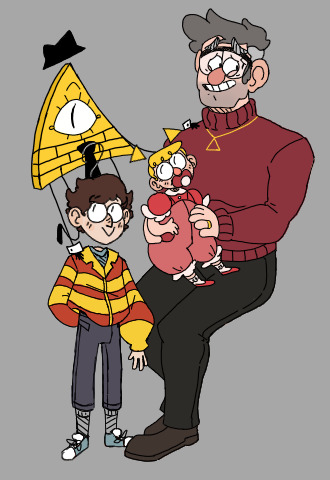


How to deal with a terrible breakup? Easy! You don't. Everything is okay in the fantasy sitcom suburb land where you control everything ever.
Silly goofy au hours. More crack than serious, but I enjoy it. I worry the three(3) episodes of Wandavision I watched and a Don't Worry Darling plot synopsis changed my neuron pathing for the worst.
#gravity falls#billford#bill cypher#fanart#stanford pines#au#ocs#ngl the idea started similar to the Dont Worry thing but got reminded that Ford had that metal plate#Soooo#yeah#Mind control not on the table? Less mind control#more erasing memories. Like that section in the book with Ford's name#Regardless hope that Ford becomes a widow very soon thoughts and prayers for him#Super close to making a few more drawings with spongebob parenting the clam memes#but maybe in the future#I do love drawing Bill with a fedora and tie#If not#Def want to draw more Billford art in general#The special interest do be special interesting
473 notes
·
View notes
Note
Do you have any Kraang headcanons from Replica that you haven’t shown in the comic?
The Krang remembers all, yet forgets much. With every new entity it takes into it's fold it gains that being's knowledge. But there is a limit to the amount of information any creature can sustain without evolving beyond it's mortal limitations to attain transcendence. The Krang would argue they have achieved as much, but it is a false godliness taken through means that would never give way to any true enlightenment.
To put it simply, the Krang retain all the knowledge of the races they have previously absorbed, but they are unable to retain every bit of it permanently. Much of it is dumped out as "pointless drivel." Memories of loved ones, artistic inclinations, the way a song makes you feel. All of it is considered unimportant and stripped to make room for actual "important" information: battle tactics, technology, enemy weaknesses and so on. Even then, it is almost too much to retain. Much of the deeper knowledge is stored within the technodrome to be easily accessed by the elite of the Krang whenever needed. It is for this reason that the Krang elite can be both part of a hive mind as well as retain their individuality. Only the strongest are given the privilege to not be swept away by the tides of the unified hive mind, even within their own species.

#a lot of this will be important later on#krang are very interesting to me#I blame the Animorph book series#they remind me of the yeerk but even more intimidating#replica#q&a#rottmnt#rottmnt replica#rottmnt krang
397 notes
·
View notes
Text
(typing this as I walk to work so this is not articulate but) thinking a lot abt how les mis w javert sort of. hm. questions? problematizes? the Idea of dogs & the domestication of dogs (metaphorically ofc) like it sort of looks past the 'man's best friend' angle entirely & makes you think things like. kind of fucked up of humans [the social order] to domesticate the wolf [person outside of society for whatever reason] expressly to turn against & cause harm to other wolves in order to keep them out [away from respectable society] & keep themselves safe but never truly consider it an equal [it'll always just be a dog]. kind of fucked up that the dog finds enjoyment & life's purpose in this
#this is NOT to absolve him of responsibility tbc like He Did All That. but it's just soo#idk i think like i said the dog metaphors are way more interesting than in a lot of other stuff bc a lot of stuff is simply unwilling to#question the fundamental idea of a dog if that makes sense. they want it to be a fundamental good thing that can be perverted#but idk 'dogs are good. people and dogs are meant to be together. in a good way' gets conceptually boring really quick#<- to be clear this is not about dogs in real life. i very much like dogs in real life. just abt literary dog metaphors & motifs#thoughts#les mis#i will say though the metaphor in the book is varied & situational so you can't develop a single framework from it this is just one aspect#anyways where's that comic about wolves seeing a dog & thinking 'what a scary fucked up creature'. javert to me sort of
425 notes
·
View notes
Text
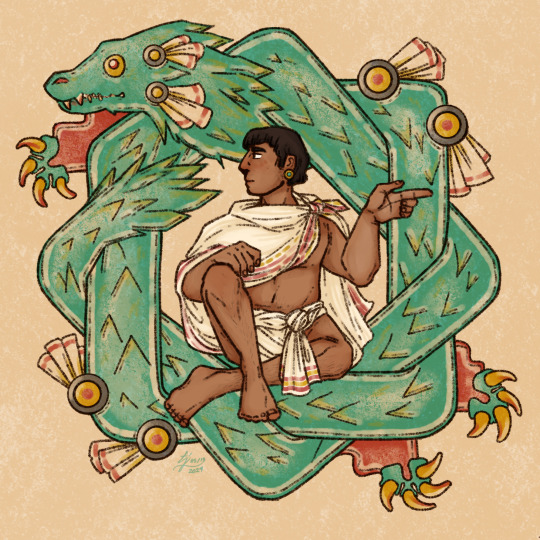
c. 1540 CE: a young man from Chalco, and his dragon.
#em draws stuff#em is posting about temeraire#temeraire#temeraire worldbuilding collection#<- tag for organizing when I'm drawing stuff that is temeraireVerse but not in the line of the plot of the books themselves#for school reasons I have been reading a lot about 14th-17th century mesoamerica#and thus am Interested in how that would have potentially played out in temeraireverse...#anyway! not sure if I'll draw these two again but I Have given the lad a day sign name (five deer) so I could Potentially. who can say.#haven't come up with a name for the dragon yet... maybe cipachcoatzin would work if can't think of anything else#<- Please Forgive My Dubious Command of Classical Nahuatl Grammar I Am But A Student#on that note zoomorphic interlace is not very much a style from this period/region but it helps me with composition things#five deer himself is mostly based on the illustration of the tlacuilo's son in the codex mendoza#the dragon is drawn more from a fusion of older scribal styles (ie. the codex borgia) and my own shorthands for dragon anatomy
524 notes
·
View notes
Text

Duchess has just such a pretty design, I love her 🦢💜
#and her character is just so interesting#the girl just wants a happy ending#even if she has to take one#low key could have paralleled Raven if they’d wanted to go that route#and in the Next Top Villain book headmaster Grimm wanted Duchess to be the new Evil Queen instead of Raven#and Duchess and Raven both have bird imagery!!#Duchess is very neat lol#ever after high#duchess swan#eah#ever after high art#ever after high books#eah royals#eah rebels#eah duchess
2K notes
·
View notes
Text



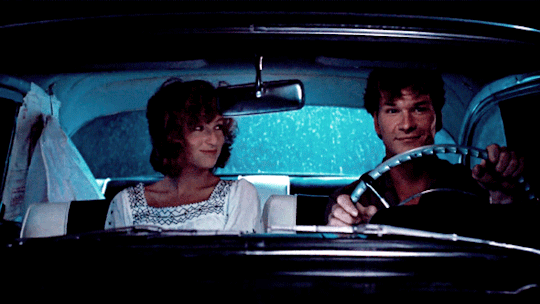


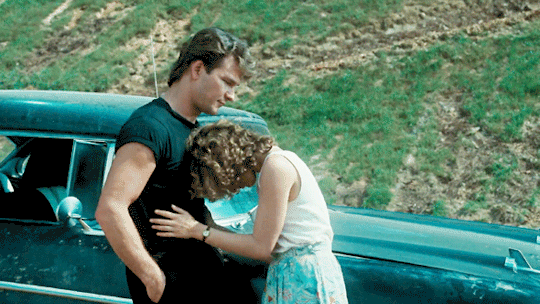

After the initial hugs and greetings from the lathered-up welcoming committee, including yours truly, putting on my most convincing friendly face, the hunky actor asked if he and I could step outside so he could have a moment alone with me. He [Patrick] took my hand and led me down the hall a little ways. Once out of earshot, we turned to face each other,
Patrick scanned me in my cut-off black tights, dance briefs rolled down, a sports bra and vintage blue satin high heels, and said, “Whoa. You clean up good, girl.”
“This is a great part for you. Congratulations.”
“I know, right? It’s crazy.” This was softening me up. It felt good to be able to share my news with someone I knew.
“I know, you’re probably thinkin’, ‘Aw, no, not this idiot again.’ ” Then his eyes started to well up. Real tears. And with the most earnest delivery imaginable, said, “You know I’ve always loved you.” He stared into my eyes. “And I’ve been really workin’ on gettin’ my shit together. So, if I get the chance, I swear I’m gonna make it up to you. You will not be sorry.”
I said, “Uh-huh.”
He smiled and was working hard on getting me to smile back. “C’mon, you know if we did this together, we’d kill it.”
There was no question that our bodies liked each other, in spite of what my head was saying. There has never been anyone with Patrick’s combination of grace, brawn, sensitivity, and fearless, reckless gusto. - From Out of the Corner: A Memoir by Jennifer Grey (2022)
PATRICK SWAYZE and JENNIFER GREY in DIRTY DANCING (1987) dir. EMILE ARDOLINO
#rediscovered i had this book in my files and i had the movie too so i'm gonna make some gifs#to some portions of the book where they talk about each other cause it's......very interesting....#you guys should read jen grey's memoir i swear#perioddramaedit#perioddramasource#dirty dancing#filmedit#filmgifs#userquel#moviegifs#jennifer grey#patrick swayze#baby houseman#johnny castle#dirtydancingedit#filmtvtoday#popcultureds#otpsource#userfilm#romancegifs#userotp#dailyworldcinema#cinematicsource#nessa007#motionpicturesource#throwbackblr#chewieblog#dailyflicks#cinemapix#otp: she's like the wind
328 notes
·
View notes
Note
you are so whimsical i qant to check out this mdzs (..??) because of your whimsical nature thank you sorry im very high and your art moved me emotionally
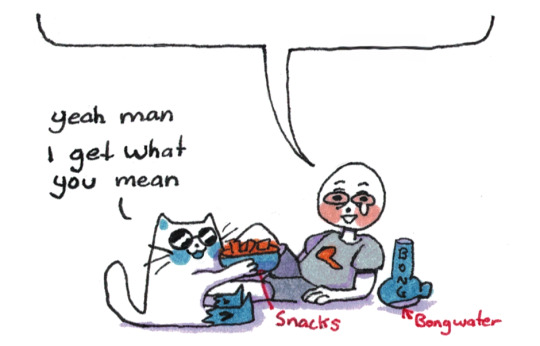
This is simultaneously the sweetest and funniest thing someone has sent me, thank you.
#ask#non-mdzs#I have a hunch you will not recall sending this to me but I wish to immortalize it.#The progression of me going 'aw' to 'barking with laughter' at the last bit of this message was a delight.#Oh man what to say about getting into MDZS...#I admit I'm probably low on the list of people who should be recommending it.#I enjoy it! But there are also a ton of different adaptations that each do a slightly different thing with the story and characters.#Personally I loved The Untamed (Netflix live action) for how campy the action was. It got emotional but really...It made me laugh.#And I love watching it with people because it also makes them laugh.#(The Untamed changes a lot of plot elements so it isn't looked upon very favourably by many fans. I love it as its own thing)#Don't get me wrong; it *is* a story with interesting things to say and I certainly have written tons of analysis on it.#But it's also a series I spent over a year making parody comics of. It comes from a place of love!#The audio drama is really good and I think it might be the best form of mdzs...however finding episodes is not easy.#The audio drama is also what I'm basing all these comics on!#There is a book (the primary source) An animated series and a comic to check out as well.#Someone probably has a better pitch and recommendation list than I do. I just make the funny comics.
342 notes
·
View notes
Text
Reading “The Man With the Twisted Lip” lol

#Sherlock Holmes#john watson#the adventures of sherlock holmes#the man with the twisted lip#classic literature#I love this book sooooo much!!!!! it’s sooo fun!!!!!!#very very very interesting!!!!!#I love the dynamic between Sherlock and Watson!!!!#and I love how silly Sherlock is!!!!!
306 notes
·
View notes
Text
How I (roughly) imagine this scale:
1- I see myself as a faster reader than the average person. I can breeze through a text quickly and still understand almost all of it
2- I read at a "normal" speed. I need to pace myself but can consistently read and comprehend a text in a reasonable time frame
3- I see myself as a slower reader than other people. It takes me a long time to get through a text and if I try to go too fast I won't understand it
Obviously this can vary by your mood, the type of text, etc. and this is a very imprecise scale with some overlap, I'm just casually curious!!
#i consider myself a sloooowwww reader#i dont really track it when reading for pleasure#but when im reading something dense like a political theory text i've realized i can only read 6 or 7 pages an hour (give or take)#in order for me to feel like im actually Getting It i need to stop and annotate while i read and also frequently re-read certain passages#this is on my mind because im reading a book for my thesis prepping for the semester and it is a slog for me#it's very interesting but i have to break it up into 45-60 minute chunks with breaks or else i'll go insane because of how long it takes me#it took me 4.5 hours to read 30 pages im not sure that's normal hahahahaaaaa#when i read for pleasure it's still slow i just dont have a stat lol
468 notes
·
View notes
Text


morning in the green box [id in alt text]
#the man who laughs#l'homme qui rit#gwynplaine#dea#artwork#:D!!!!!!!!#this took so long but i enjoyed it so much it's been ages since i've done a piece with such detailed linework i had forgotten how much i#enjoy it#i also read a whole book as research (concerning beards facial hair health and practice in england 1650-1900 by alun withey) which didnt#influence the end result in any noticeable way. but it was fascinating highly recommend if you're interested in early modern facial hair#i was trying to find out what sort of razor gwyn should be using/whether it would be realistic for him to be shaving himself/what sort of#utensils he should use/whether there should be lather/etc.#the book argued that it was probably fairly rare for men to shave themselves at this period (early c18th) but No Way is gwynplaine going to#a barber surgeon. this guy doesnt like showing his face to his blind wife let alone Some Random Guy#also there would have been a lather because shaving textbooks describe the cakes of soap used and the lather produced. yay learning#anyway i just submitted my thesis yesterday so i am pretty much Free now! wahoo :D :D :D hopefully i will be around more often now#(and can answer my Very outstanding messages. I Am Sorry)#i hope you are all doing well my beloved friends :) i just wrote belobed the first time. i hope your lobes are well too
218 notes
·
View notes
Text



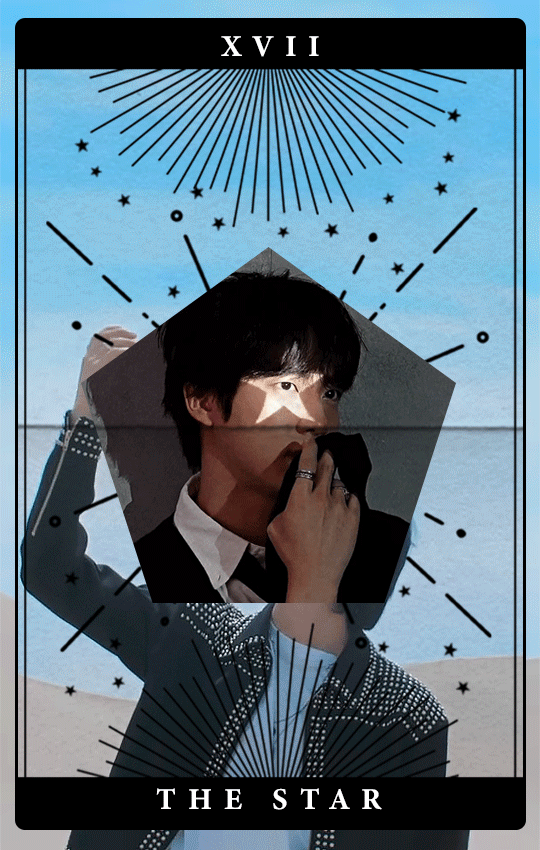

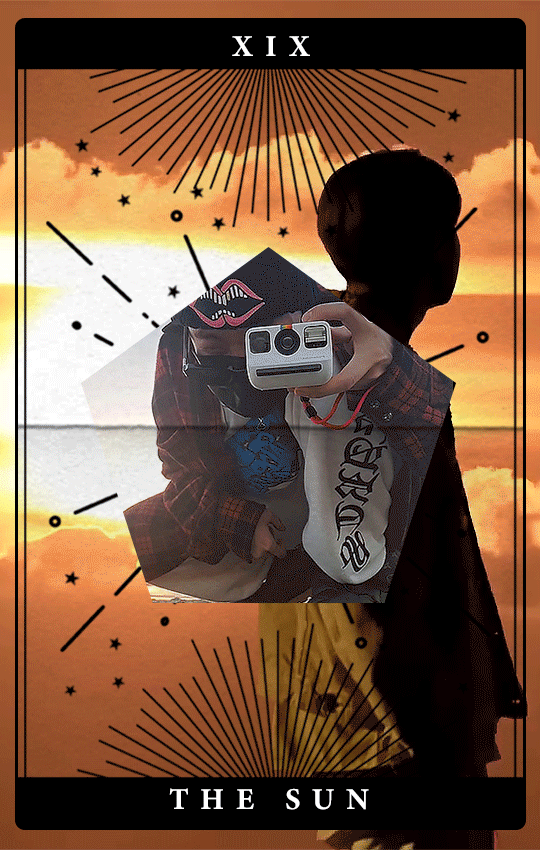


BTS x Major Arcana
for @dearedwardteach 🖤
{cr. namuspromised / psd / cards}
#HAPPY BIRTHDAY TO THE BEST PERSON ON THIS ENTIRE SITE <3#i'm late and i'm so so sorry#i had entirely different thing planned but it was awful and then i found this template and it made me think of you immediately!#i hope you like it#bts#btsgif#dailybts#dailybangtan#userbangtan#btsedit#*mine#ot7#sabri i have no words to describe how lucky i am to get to know you#you wished on my birthday to go to concert together and now look at us! we have two booked!#i cannot wait march to see you <3#i hope you will have great year full of happiness and kind people and so much love!#ily fr <3#disclaimer: i know nothing about tarot cards or anything like that#i went with general descriptions#so please let me know what you think about my choices! it's actually very interesting!#if there are any typos or anything please don't tell me or i'll cry
358 notes
·
View notes
Text
very interested in how the storyline of ronan's sexuality is developed in the dream thieves as a battle between kavinsky and gansey while adam is almost never present in these scenes, which makes it even more interesting that we found out in CDTH that ronan was set on adam the moment he saw him. i think that ronan is attracted on some level to both gansey and kavinsky (you can draw the lines of how much romantic intention you think he hold towards either of the yourself, that's a rabbit hole I would need a whole other post to go down) but more so I think he was attracted to the IDEA of both of them and certain qualities that each possessed, and that the real question wasn't does ronan want gansey or kavinsky because we know he wants adam but rather who's qualities resonate more with who ronan is, or who he is choosing to be at this critical moment in his character development. kavinsky is a dangerous thrill and often comes wrapped in ronan's other favorite self destructive attempts to outrun himself, while gansey is ronan's history and proof of his deep capacities for loyalty and love. he tells kavinsky it was never going to be me and you and that it's not going to be ronan and gansey because that was never the question- maggie was obviously always planning on bluesy and pynch. the answer to who ronan WANTS in adam. the question of who ronan IS- that's what he's trying to decide here. his self hatred is such a heavy weight on him and theme in tdt, and the kavinsky/gansey dichotomy represents the the path he will choose to take to deal with it- keep try to drive faster than his demons or accept that he can still be loved even if he isn't the person he once was. the dream thieves my beloved ronan lynch my beloved
#obviously I'm not the authority on this lmao these r just my thoughts but I would love to hear ur thoughts as well!!!#this has been in my drafts for a while while I kept updating and tweaking it but I think this is the best way to say what I'm trying to say#also lot of kavinsky posts here at kazbiter recently not very sure what's up w that#anyways yeah I really do think this is why she did it this way like I don't think kavinsky ever even says adams name?? i could b wrong tho#and I always found that interesting and while I appreciated he was the leader of ronsey nation I was like how does he not know abt adam#and this is my conclusion I think it was an active writing choice of Maggie's bc the dichotomy of gansey/kavinsky just really works for#ronans personal overarching plot of the book that is undoubtedly his in trc
1K notes
·
View notes
Text
not sure if this was intentional or not but nemik saying in his manifesto “Remember this: Try.” is an interesting sentiment given that “do or do not, there is no try” is like one of the more famous lines from the original trilogy
#sw.txt#andor spoilers#andor#VERY INTERESTING IF THAT IS INTENTIONAL#maybe speaks to the disconnect between the jedi and the rebellion even after the order fell#the OT was written without the PT in mind but like the PT establishes yoda as a figurehead of the order#so like you could read that line as one being informed by a long familiarity with institutional power#and all the privileges that grants#there’s a similarly ‘heretical’ line from obiwan in uhhh wtf was that book called. planet something#the one by Greg bear#whatever it’s legends now but obiwan tells anakin that the force is not a nurse maid it will not protect you#which is a fairly radical thing for a Jedi to say#it’s understandable since it was shortly after he lost quigon#but I especially like when other sw media responds to established canon in a critical way#not necessarily to say it’s wrong but to present a perspective that frames the established canon as something you can contest
3K notes
·
View notes